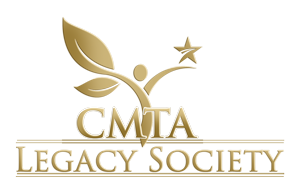
What is Charcot-Marie-Tooth disease?
Named after the three doctors who first described it in 1886: Charcot (shar-coh), Marie, and Tooth, Charcot-Marie-Tooth disease (CMT) is an inheritable peripheral neuropathy that includes many motor and/or sensory neuropathies, axonopathies, myelinopathies, and neuronopathies. Due to the degradation of their nerves, people with CMT suffer lifelong progressive muscle weakness and atrophy of the arms and legs, progressive sensory loss, and CMT can affect other parts of the body. This leads to problems with balance, walking, hand use, and more. There currently is no treatment or cure for this debilitating and often overlooked disease.
THERE ARE MANY PHRASES USED TO DESCRIBE CMT. Some that might appear in test reports might be length-dependent axonal polyneuropathy, demyelinating peripheral polyneuropathy, or axonal sensorimotor polyneuropathy, for example. Poly means more than one – many, neuropathy means peripheral nerve disease, and together, polyneuropathy means a peripheral neuropathy affecting more than one nerve. Sensorimotor means sensory and motor nerves.
In CMT, all peripheral nerves, whether sensory or motor, can be affected, although sometimes only the motor nerves are affected and sometimes only the sensory nerves are affected.
What is A Peripheral Neuropathy?
A PERIPHERAL NEUROPATHY IS A DISEASE OF THE PERIPHERAL NERVES. What are the peripheral nerves? The peripheral nerves are every nerve that lies outside of the brain and spinal cord, except for the optic nerves which are part of the central nervous system. The peripheral nerves connect the brain to the rest of the body and allow the brain to send messages to the body while also allowing the body to send message to the brain. There are two basic types of peripheral nerves: motor nerves and sensory nerves.
The motor nerves are responsible for movement. The motor nerves are how the brain controls the muscles of the body. The sensory nerves send sensory information, such as touch, temperature sensation, and pain, to the brain. Additionally, there are autonomic nerves that control the body’s automatic functions, or what are things that we don’t have to think about doing, such as sweating, breathing, etc. CMT can impact each of these and rarely does CMT affect all three types of nerves.
What are the Symptoms of CMT?
EARLY SIGNS AND SYMPTOMS OF CMT might include but are not limited to toe-walking (especially in children), frequent tripping caused by catching the toes due to a weakening of the muscles that pick up the front of the foot (foot drop), frequent ankle rolls/sprains, frequent muscle cramps in the hands and problems with using pens/pencils/crayons and eating utensils, and issues with other tasks involving fine motor skills—zippers, buttons, keys, etc.
CMT OFTEN CAUSES NUMBNESS, especially in the points farthest away from the spinal cord (distal), such as the hands and feet. Hand numbness can be random and episodic. It’s not uncommon for somebody who has CMT to wake up in the morning with painfully numb hands. Sometimes, this numbness clears up within a couple of hours. Other times, it can last for weeks or even months.
CMT OFTEN CAUSES SEVERE CHRONIC PAIN. The pain can be debilitating. Sometimes, the pain is neuropathic pain. Other times, it’s muscle and joint pain (musculoskeletal). For many who have CMT, it can be both. Download your copy of Pain and Charcot-Marie-Tooth Disease.
CMT OFTEN CAUSES A GREAT DEAL OF FATIGUE. It’s well known that somebody who has CMT typically expels three times more energy performing even the most remedial of tasks than somebody who does not have CMT.
CMT OFTEN CAUSES HIGH ARCHES as part of what’s called cavovarus (cay-voh-vayr-us) foot deformity. A cavovarus foot has a high arch, is twisted downward towards the front, and outward onto the lateral (outside) edge of the foot. This deformity is caused by an unequal, unbalanced weakening of the muscles that control the foot.
FOR REASONS UNKNOWN, some of the muscles that control the foot remain relatively strong in CMT while their opposing muscles become relatively weak. These unbalanced muscle forces exerted on the foot are strong enough to cause bones in the foot to change shape. The result is a painful, twisted, and crooked foot that poorly distributes weight, makes mobility difficult, causes frequent trips and falls, and causes frequent ankle sprains. Over time, these can lead to premature ankle, knee, hip, and lower back wear/degenerative changes.
SOMETIMES, CMT CAUSES FLAT FEET, or what is “pes planus.” A pes planus foot deformity in CMT is also caused by an unbalanced weakening of the muscles that control the foot. The unbalanced weakening occurs in muscles opposite to those that cause cavovarus deformity. A pes planus deformity causes the foot to turn inward rather than outward. Again, because it is the opposite to cavovarus. Pes planus deformity is as painful and problematic as cavovarus foot deformity.
KNEECAP DISLOCATIONS CAN COMMONLY OCCUR IN CMT, especially in children. A condition called “patella alta,” or what is a kneecap (patella) that is located higher up the leg than it should be (alta), is experienced by many who have CMT. This is likely caused by a weakening of the leg muscles and likely contributes to the dislocations.
CMT OFTEN CAUSES FINGER CONTRACTURES (clawed hands), toe contractures, tremor, absent or reduced reflexes, poor circulation (neuromuscular-induced venous insufficiency), scoliosis, kyphosis (kyphoscoliosis when scoliosis and kyphosis occur together), and the list goes on.
LESS COMMON, BUT STILL QUITE TROUBLESOME, CMT can cause neurogenic bladder issues, neurogenic bowel issues, vision problems (due to optic atrophy and/or slowly reactive pupils), vestibular issues leading to worsened balance, speech/vocal issues, swallowing/choking issues, and breathing issues. Visit our CMT and Breathing page for more information about how CMT can affect breathing.
How is CMT Diagnosed?
CMT CAN BE DIFFICULT FOR A DOCTOR TO DIAGNOSE, especially when there is no established family history of CMT. According to CMTA Centers of Excellence CMT specialists, to diagnose CMT, one must meet the appropriate clinical picture: high arches, reduced sensation especially in the lower limbs, reduced or absent reflexes, frequent tripping, difficulty writing, abnormal nerve conduction study (NCS) results , and any number of other CMT symptoms.
CMT SHARES SYMPTOMS WITH OTHER CONDITIONS, such as chronic inflammatory demyelinating polyradiculoneuropathy (CIDP), Vitamin B12 deficiency, G6PD-deficiency associated blood disorders, etc. Part of diagnosing CMT is ruling out conditions that are potentially treatable, and especially those that can be relatively easy to treat, such as Vitamin B12-deficiency.
Does Somebody Need Genetic Testing to Diagnose CMT?
GENETIC TESTING IS NOT NEEDED TO DIAGNOSE CMT. Due to many factors and variables that contribute to limitations in CMT genetic testing, genetic testing is only one piece of the diagnostic puzzle doctors have for diagnosing CMT. For everything CMT genetic testing can potentially identify and/or confirm, due to its limitations, CMT symptoms and NCS results are the standard for clinically diagnosing CMT.
Genetic testing is needed to pinpoint the exact CMT subtype, but when signs and symptoms are consistent with CMT (the appropriate clinical picture is met) doctors can clinically diagnose CMT as CMT1 or CMT2 based on NCS results. Visit our Diagnosing CMT page for more information.
How is CMT Treated?
TREATING CMT IS A HIGHLY INDIVIDUALIZED APPROACH TO SYMPTOM MANAGEMENT. There aren’t yet any approved treatments for CMT. However, the many symptoms and presentations of CMT can be well-managed. Each person who has CMT has their own individual needs. Physical and occupational therapy, proper foot and ankle orthoses (AFOs), remaining as active as one can, surgical intervention to correct foot deformities, and surgical intervention to correct hand deformities are just some of the ways CMT symptoms are managed.
Being seen at one of CMTA’s many Centers of Excellence is one of the best ways to treat and manage the many things CMT can cause. Each CMTA Center of Excellence is staffed by world-renowned expert CMT physicians, clinicians, and researchers. Children, adults, and families affected by CMT can be assured they’ll receive only the best comprehensive care by a team of CMT experts available at these CMTA-affiliated clinics. Visit our Centers of Excellence page to find your closest CMTA Center of Excellence.
How Common is CMT?
CMT AFFECTS ONE IN EVERY 2,500 PEOPLE—a rare disease subdivided into multiple subtypes, each with a lower prevalence. Although CMT is a rare disease, it is also the most common inherited peripheral neuropathy.
How Many Types of CMT are There?
CMTA HAS CATALOGED MORE THAN 160 INDIVIDUAL TYPES OF CMT, each caused by one of many various mutations in more than 130 genes CMTA has also cataloged. The types are classified into thirteen classifications: CMT1, CMT2, CMT4, CMTX (X-Linked CMT), CMT-DI (Dominant Intermediate CMT), CMT-RI (Recessive Intermediate CMT), dHMN, dSMA, GAN, HMSN, HSAN, HSN, SMALEP. There is one additional group known by their gene name, such as CMT-SORD or CMT-BAG3, for example.
How is CMT Inherited?
CMT IS INHERITED IN ONE OF FIVE DIFFERENT WAYS, and each is an inheritance pattern. CMT’s five inheritance patterns are autosomal dominant, autosomal recessive, X-Linked dominant, X-Linked recessive, and one type is inherited via mitochondrial inheritance.
Autosomal means the gene lives on one of the numbered chromosomes (1-22). Dominant means a gene needs just one mutation. Recessive means a gene needs two mutations. X-Linked means the gene lives ion the X-chromosome. Mitochondrial means the gene with the CMT-causing mutation lives within mitochondrial DNA, and mitochondrial DNA is inherited only from the mother. The inheritance pattern of one’s CMT is determined by the specific gene mutation/by the CMT type.
THE MAJORITY OF CMT TYPES ARE AUTOSOMAL DOMINANT in inheritance. Somebody who has an autosomal dominant CMT has a 50/50 chance of passing on their CMT to their children. For the remaining inheritance patterns, the chances of passing on CMT have many variables. A CMT specialist or a genetic counselor who specializes in CMT, such as though who are available at CMTA Centers of Excellence, can give expert advice and guidance about these chances of inheritance.
Can Somebody Have CMT Without Inheriting It?
SOMEBODY CAN HAVE CMT WITHOUT INHERITING FROM A PARENT. When somebody has CMT without having inherited it from a parent, it is caused by a gene mutation that occurred randomly and spontaneously on its own at or shortly after conception. When this happens, doctors use the term “de novo.” De novo means new, or what is a “new case.” The chances for passing on a de novo CMT case are the same as though it had been inherited from a parent. These chances are determined by the CMT-causing mutation/CMT type.

CMTA is aggressively pursuing treatments and a cure for all types of CMT. Since launching the Strategy to Accelerate Research (STAR) in 2008, CMTA has been working with preeminent researchers, clinicians, patients and institutions in the global inherited neuropathy community to capitalize on breakthroughs in genetics.
Unlike other neuromuscular diseases, the genetic causes of CMT are known. In fact, more than 90 specific genes that cause the disease have been identified. More importantly, the fact that most of these genetic mutations can be replicated in laboratory models and grown as tissue cultures has opened an extraordinary window of opportunity to develop treatments and cures using the latest pharmaceutical, biotech, and gene therapy technologies.
“STAR is the most important initiative ever undertaken by the Charcot-Marie-Tooth Association,” according to Michael E. Shy, MD, Co-Chair of the Clinical Expert Board. “In addition to developing specific therapies for CMT patients, the translational science employed in the research could have major implications for the treatment of a host of related genetic disorders.”
CMTA has made unprecedented progress toward therapies for virtually almost all types of CMT. Since the inception of STAR, CMTA has financed more than 100 projects and committed over $23.5 million in research. Thanks to support from our donors, STAR continues to gain momentum and the promise of breakthroughs is imminent.
Living with CMT can be challenging, but you are not alone. CMTA is with you every step of the way. Together, we can create a world without CMT!
Learn more about the CMT Diagnosis Process ⟶
Page Updated: April 30, 2024










